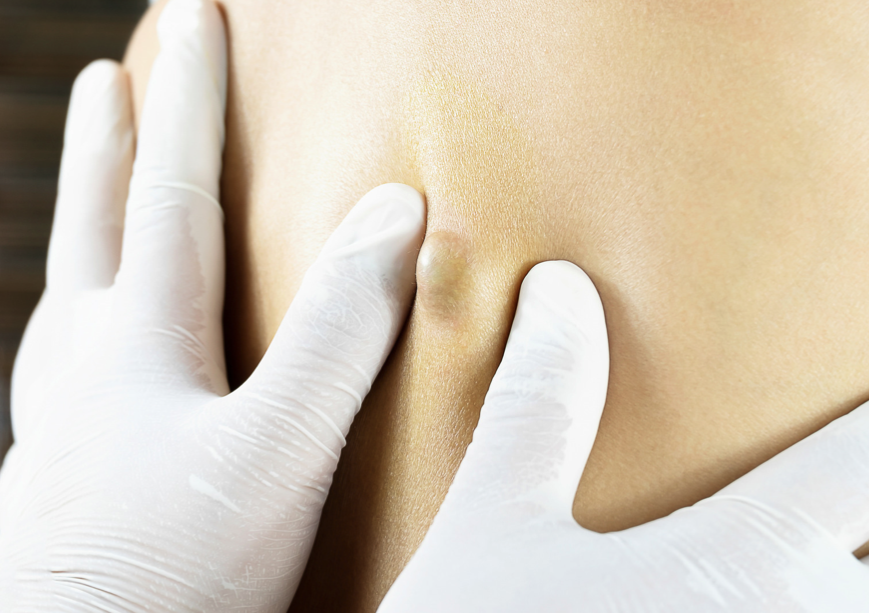Definition
Endometriosis is an infection in the female reproductive system characterized by endometrial tissue outside the uterus. The term endometriosis is derived from "endometrium," which refers to the lining tissue of the uterus.
Normally, during menstruation, this tissue forms on the uterine wall and sheds if fertilization by sperm does not occur. However, in women with endometriosis, this tissue continues to form outside the uterus. This tissue will develop a cyst-like structure.
It is also known as endometriosis cysts or chocolate cysts. Cysts can develop in the pelvis, ovaries, ligaments around the uterus, the space between the uterus and rectum, fallopian tubes, or the abdominal cavity due to hormonal imbalances. This leads to swelling, inflammation, and scarring of the uterine wall and surrounding areas. The trapped tissue can cause severe pain, especially during menstruation, and can also affect fertility.
Causes
The exact cause of endometriosis is not known. However, there is a link between endometriosis and family history of the condition. Several conditions are known to cause endometriosis:
- Retrograde menstruation: This occurs when menstrual blood flows backward into the pelvic cavity instead of exiting through the vagina.
- Transformation of peritoneal cells: hormonal or immune factors can cause peritoneal cells in the abdominal cavity to transform into endometrial cells, leading to endometriosis.
- Surgical scars: Endometrial cells can attach to surgical incisions after procedures like cesarean section or hysterectomy.
- Immune system disorders: Problems with the immune system can prevent the body from recognizing and destroying endometrial tissue outside the uterus.
- Embryonic cell transformation: Estrogen can cause embryonic cells to develop into endometrial cells after puberty.
Risk Factor
All women are at risk of developing endometriosis, but certain factors increase this risk:
- Family history of endometriosis
- First childbirth after age 30
- Abnormal uterine structure
- First menstruation before age 11
- Menstrual cycles shorter than 27 days
- Never having given birth
- Low body mass index
- Excess estrogen levels
- Ages 25-40
Endometriosis typically develops a few years after the first menstrual period. Symptoms often improve with pregnancy and may disappear entirely with menopause.
Symptoms
Symptoms of endometriosis may vary, including:
- Severe lower abdominal, pelvic, and lower back pain
- Excessive menstrual pain (dysmenorrhea)
- Pain during or after sexual intercourse
- Painful urination or bowel movements during menstruation
- Constipation, diarrhea, or blood in the urine and stool
- Extreme fatigue
- Difficulty getting pregnant
- Bleeding or spotting between menstrual periods
Diagnosis
Diagnosis of endometriosis involves anamnesis (patient interview), physical examination, and supporting tests.
Anamnesis. The doctor will ask about the patient's main complaints, accompanying symptoms, duration of symptoms, menstrual cycle history, age at first menstruation, treatment history, past illnesses, and family history of endometriosis.
Physical examination. The doctor will check the patient's general condition, blood pressure, body temperature, respiratory rate, and pulse. A pelvic examination will be conducted using fingers and a speculum to inspect the vagina and cervix.
Supporting tests. Supporting tests may include ultrasound (USG), Magnetic Resonance Imaging (MRI), laparoscopy, and biopsy. Laparoscopy and biopsy help diagnose and treat endometriosis by providing detailed images and samples of endometrial tissue.
Management
Endometriosis treatment includes surgical and non-surgical options.
Non-Surgical Treatment
- Pain relief medication: Nonsteroidal anti-inflammatory drugs (NSAIDs) like paracetamol or ibuprofen can reduce pain.
- Hormone therapy: Hormone therapy, including birth control pills and other medications, can stop the hormonal cycle that causes endometrial tissue growth.
Surgical Treatment
- Laparoscopy: This procedure can treat endometriosis and help diagnose it.
- Hysterectomy: In severe cases, removing the uterus may be considered.
In some cases, endometriosis may resolve over time, especially in postmenopausal women or those with small endometriosis cysts. However, regular monitoring by a gynecologist is recommended.
Complications
Common complications of endometriosis include:
- Fertility issues: Many women with endometriosis have difficulty conceiving. In vitro fertilization (IVF) may be an option.
- Ovarian cysts and adhesions: These occur near the ovaries.
- Bladder and bowel problems: Endometriosis can affect these organs, requiring surgery to restore function.
- Ovarian cancer: Though rare, this cancer can develop as a complication of endometriosis.
Prevention
While endometriosis cannot be entirely prevented, the following steps can reduce the risk:
- Exercise 3-5 times a week
- Avoid alcohol and caffeine
- Eat a balanced, nutritious diet
- Regular check-ups, especially with a family history of endometriosis
- Maintain a healthy weight and body mass index
When to See a Doctor?
Seek medical attention if you experience excessive menstrual pain that interferes with daily activities, especially if you have a family history of endometriosis. Visit a nearby gynecologist for evaluation.
Looking for more information about other diseases? Click here!
- dr. Alvidiani Agustina Damanik
Cleveland Clinic - Endometriosis. (2022). Retrieved 26 September 2022, from https://my.clevelandclinic.org/health/diseases/10857-endometriosis.
John Hopkins Medicine - Endometriosis. (2021). Retrieved 26 September 2022, from https://www.hopkinsmedicine.org/health/conditions-and-diseases/endometriosis.
Mayo Clinic - Endometriosis. (2018). Retrieved 26 September 2022, from https://www.mayoclinic.org/diseases-conditions/endometriosis/diagnosis-treatment/drc-20354661.
WebMD - Endometriosis. (2021). Retrieved 26 September 2022, from https://www.webmd.com/women/endometriosis/understanding-endometriosis-symptoms.










